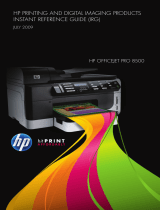
1
Table of contents
1 Introduction............................................................................................................................. 1
How to use this guide.............................................................................................. 1
Learn more! ........................................................................................................... 1
Safety information .................................................................................................. 1
2 Overview ................................................................................................................................ 2
How it works.......................................................................................................... 2
Startup kit contents.................................................................................................. 3
Major components.................................................................................................. 4
Control panel ......................................................................................................... 5
3 Setup ...................................................................................................................................... 6
Connecting the system............................................................................................. 6
4 Operation ............................................................................................................................... 8
Cleaning Models .................................................................................................... 8
Other information ................................................................................................. 11
5 Maintenance ......................................................................................................................... 13
Inspecting and cleaning the strainer ........................................................................ 13
Cleaning ............................................................................................................. 13
Model bag .......................................................................................................... 13
6 Troubleshooting..................................................................................................................... 14
Troubleshooting.................................................................................................... 14
7 Support................................................................................................................................. 16
Introduction.......................................................................................................... 16
HP Professional Services ........................................................................................ 16
Contact HP Support .............................................................................................. 17
8 System Specifications ............................................................................................................. 18
Physical specifications ........................................................................................... 18
Facility specifications ............................................................................................ 18
Power specifications.............................................................................................. 18
Ecological specifications........................................................................................ 18
Environmental specifications................................................................................... 19
Acoustic specifications .......................................................................................... 19




















